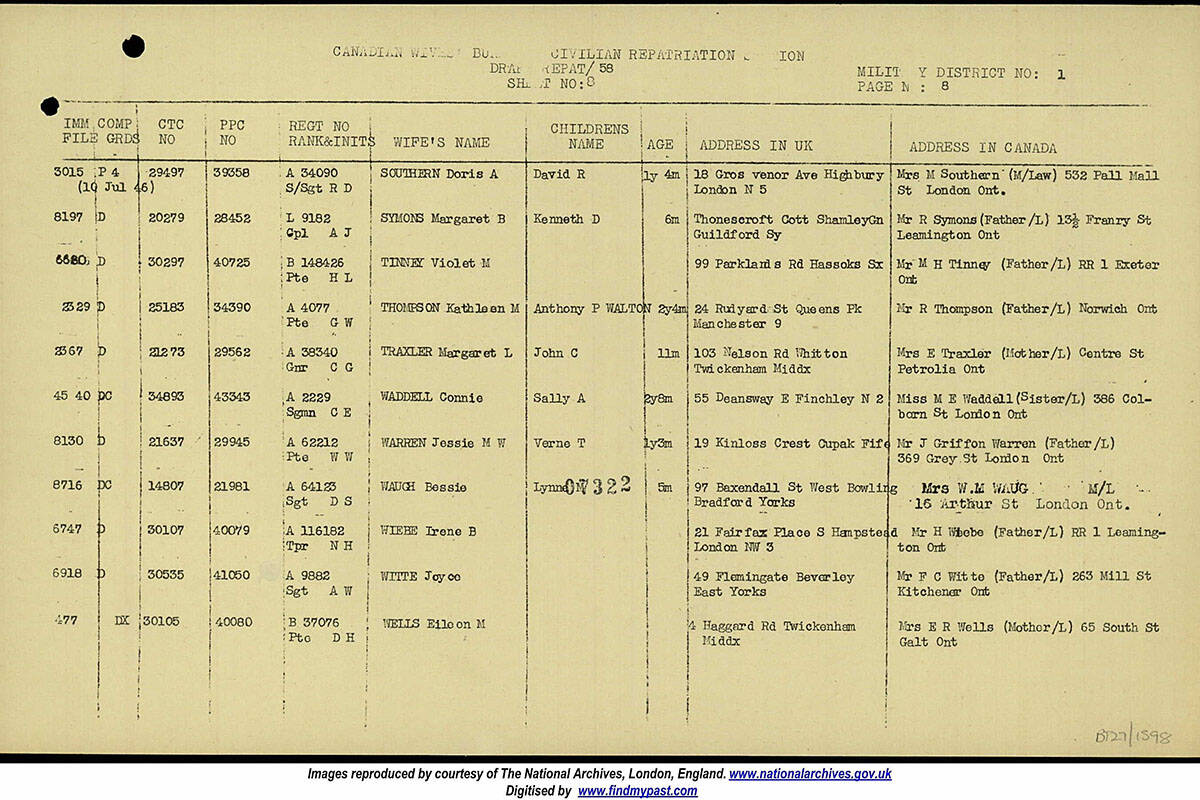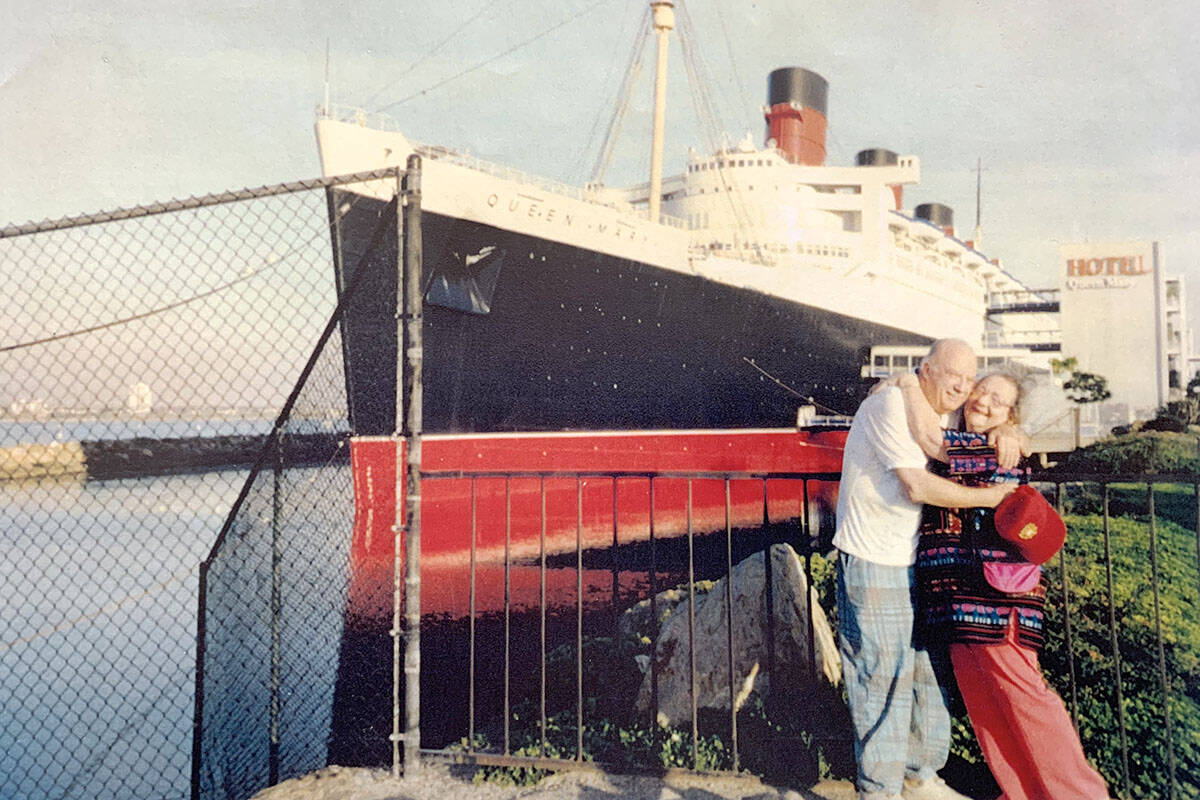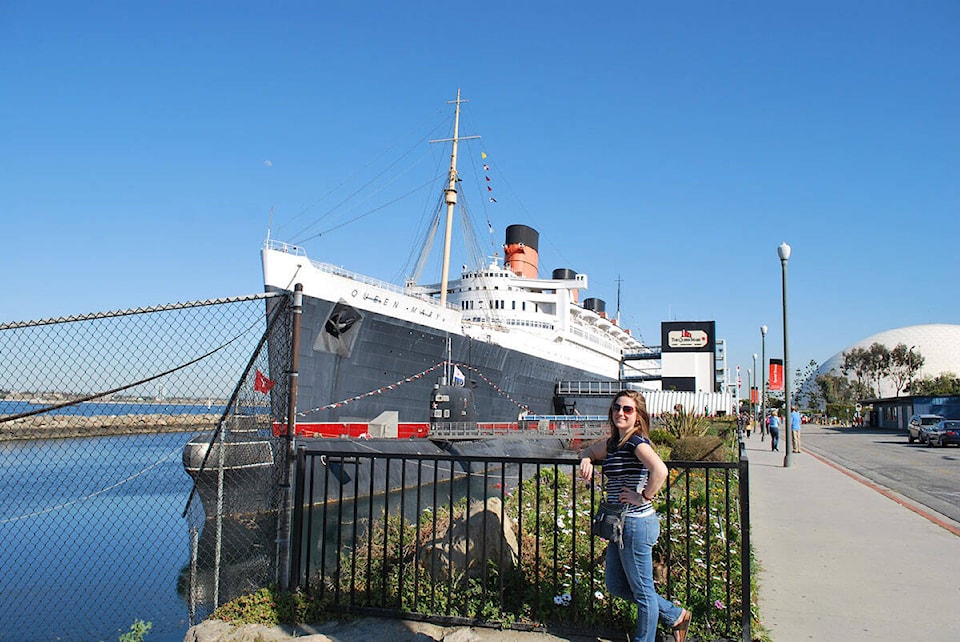An Abbotsford woman who was hoping to retrace her grandmother’s steps as a Second World War bride has now been able to do so thanks to records that have recently been made easily accessible through the online genealogy company Ancestry.
Carly Verheyen previously discovered 110 love letters written by her grandmother in England over a six-month span in 1946, and this inspired her to retrace her grandma’s steps as a war bride.
Verheyen travelled to England in 2013 and searched records at The National Archives, where she hoped to find evidence of her grandmother’s voyage. But the records she found were either damaged or illegible.
But Canadian war brides’ records have now become more accessible, thanks to updates made to UK and Ireland outward passenger lists from 1890 to 1960. Ancestry users can now learn details about a war bride’s immigration journey, including where she left from, when she left and where she arrived, as well as key dates and information about her husband’s military service.
RELATED: Canadian painter Bev Tosh shares her series paying tribute to war brides
The records have been available on the Ancestry site for several years, but until recently, those pertaining to the Canadian war brides had not been digitally indexed – meaning they did not show up in search results – due to their slightly different format.
Verheyen said her family-history exploration began in 2009, when she discovered the love letters written by her grandmother.
“The letters were written during the time when my grandparents were separated, after my grandfather had to return to Canada along with his fellow soldiers after WWII, and my grandmother was waiting for the opportunity to move here to be reunited with her husband,” she said.
Verheyen was disappointed that she could not obtain the records she wanted in England, but was thrilled to discover the passenger list collection on Ancestry and be able to complete the story of her grandmother’s journey.
“After coming up empty-handed for many years, I was absolutely elated when recently I discovered the information I was looking for,” she said.
Between 1942 and 1948, almost 65,000 women and their children arrived at Pier 21 in Halifax, Nova Scotia – the wives of Canadian servicemen stationed in Europe during the Second World War who had married while abroad.
These “war brides” came to Canada to be reunited with their spouses during the war and once hostilities ended.
Lesley Anderson, family historian from Ancestry, said the updated search function will enable many more Canadians to fill in the gaps in their family history.
“Knowing about an ancestor who made this journey to Canada, the role they played during the war and the life they went on to live can be a meaningful and often emotional experience,” she said.
The collection can be accessed at ancestry.ca/search/collections/2997/
RELATED: Web project focuses on Fraser Valley World War Two history


